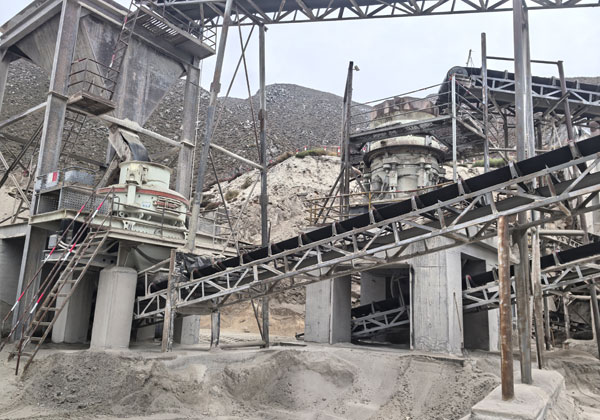Machine-made sand, also known as manufactured sand, has become increasingly popular as a high-quality alternative to natural river sand in construction projects. The core equipment in producing machine-made sand is the sand crusher, which is designed to efficiently crush and shape rocks into fine particles suitable for construction. Understanding the technical features of a machine-made sand crusher is essential for selecting the right equipment and optimizing production.
1. High Crushing Efficiency
Machine-made sand crushers are engineered for high crushing efficiency. They utilize advanced crushing mechanisms, such as impact, cone, or vertical shaft impact (VSI) crushing, to reduce raw materials to the desired sand particle size. High efficiency reduces energy consumption and increases output, making production more cost-effective.
2. Adjustable Particle Size
One of the most important technical features of a sand crusher is its ability to control the particle size of the finished product. Modern crushers allow operators to adjust the discharge opening, rotor speed, or crushing chamber configuration. This flexibility ensures the sand meets specific construction standards, such as fine aggregate gradation requirements.

3. Durable Construction and Wear Resistance
Machine-made sand crushers are subjected to continuous abrasion from hard rocks. Therefore, they are built with high-quality, wear-resistant materials such as manganese steel or chromium alloy for key components like blow bars, hammers, and crushing plates. This enhances durability, reduces downtime, and lowers maintenance costs.
4. Multiple Crushing Stages
Many sand crushers integrate multiple stages of crushing in a single machine. For instance, primary crushing reduces large stones to manageable sizes, secondary crushing refines them further, and tertiary crushing or shaping produces cubical sand particles. This multi-stage approach improves the quality and uniformity of the finished sand.
5. High-Performance Rotor Design
In impact and VSI sand crushers, the rotor design plays a critical role. Advanced rotors are optimized for high-speed rotation and efficient material impact. They can produce sharp, cubical sand particles, which improve the workability and strength of concrete compared to rounded natural sand.
6. Low Energy Consumption
Modern sand crushers are designed to minimize energy consumption while maintaining high output. Features such as efficient motors, optimized crushing chamber design, and automation systems reduce unnecessary energy use. This makes machine-made sand production more sustainable and economically viable.
7. Versatility in Material Handling
Machine-made sand crushers can handle a wide range of raw materials, including granite, limestone, basalt, and river pebbles. This versatility ensures consistent production of sand regardless of the local availability of natural resources.
8. Automation and Smart Control
Many advanced sand crushers feature intelligent control systems that monitor feed rate, material size, and wear status. Automated adjustments improve production consistency and reduce the need for manual intervention, enhancing overall operational efficiency.
Conclusion
The technical features of a machine-made sand crusher—high efficiency, adjustable particle size, wear-resistant construction, multi-stage crushing, optimized rotor design, low energy consumption, material versatility, automation, and dust control—make it an indispensable machine in modern construction. Selecting the right crusher with these features ensures high-quality sand production, cost-effective operation, and long-term reliability.
